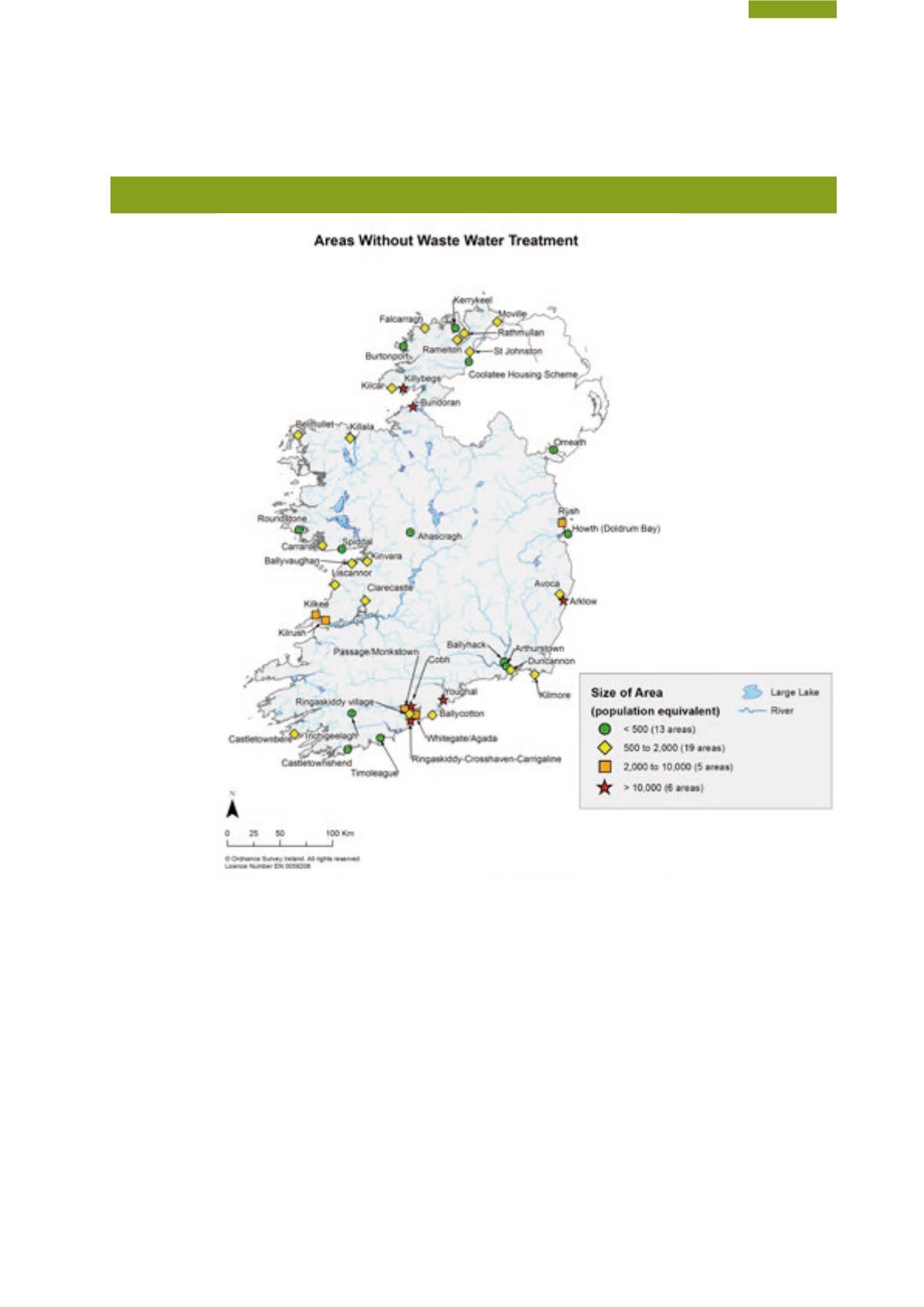

135
Chapter 8: Environment, Health and Wellbeing
Figure 8.7
Areas Without Waste Water Treatment (Source: EPA)
Raw sewage is being
discharged into 43 rivers,
lakes and coastal areas
around Ireland.
Since 2007, the EPA has issued over 1,000 Waste Water
Discharge Authorisations for towns and villages across Ireland.
Recent EPA findings show significant infrastructural
deficits; for example, the 2014 report highlighted that
untreated sewage was discharged from 45 areas (now 43
locations), 12 treatment plants failed to provide secondary
(biological) treatment and a further seven treatment plants
failed to meet nutrient removal standards (EPA, 2015e).
Monitoring data show that 82% of large urban areas
complied with the mandatory effluent quality standards in
2014. However, where waste water is being discharged into
nutrient-sensitive areas, only 24% of the load discharged
complied with the more stringent effluent quality standards
that apply in these areas. Dublin and Cork were the major
contributors to this low rate of compliance. Waste water
discharges also contributed to poor water quality at 6 of
Ireland’s 137 identified bathing waters (EPA, 2016).
Significant investment has gone into improving Ireland’s
waste water infrastructure since 2000. As a result, the
proportion of waste water receiving secondary (biological)
treatment increased nationally from 29% in 2001 to 94%


















